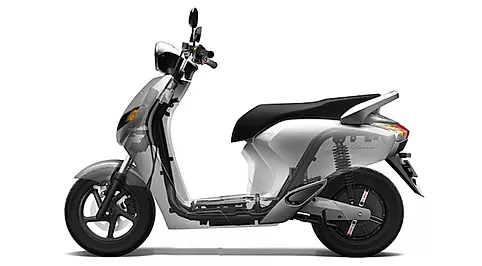Two-wheeler chassis technology has witnessed remarkable advancements over the years, playing a pivotal role in enhancing performance, safety, and overall riding experience. From traditional designs to modern innovations, the evolution of two-wheeler chassis has been intriguing. In this post, we delve into the journey of two-wheeler chassis technology, exploring its evolution and significance in the realm of motorcycles and scooters.

Understanding Two-Wheeler Chassis
A two-wheeler chassis serves as the structural backbone of a motorcycle or scooter, providing support to crucial components such as the engine, suspension, and bodywork. It determines the vehicle’s stability, handling characteristics, and overall dynamics. Traditionally, two wheeler chassis were constructed using steel tubes welded together to form a frame. However, advancements in materials and manufacturing techniques have led to the emergence of diverse chassis designs, each tailored to specific riding requirements.
Evolution of Two-Wheeler Chassis Technology
Traditional Frame Designs
In the early days of motorcycling, rigid frames dominated the scene. These frames were simplistic in design, featuring straight tubes welded together to form a sturdy structure. While effective for basic transportation, rigid frames lacked flexibility, resulting in a harsh riding experience, especially on uneven terrain.
Introduction of Suspension Systems
The introduction of suspension systems revolutionized two-wheeler chassis technology, significantly enhancing ride comfort and handling. Manufacturers began incorporating telescopic forks at the front and swingarm suspension at the rear, allowing for better absorption of road imperfections. This innovation marked a significant milestone in the evolution of the two-wheeler chassis, making motorcycles and scooters more versatile and enjoyable to ride.
Transition to Monocoque and Trellis Frames
As engineering prowess advanced, new frame designs emerged to meet evolving performance demands. Monocoque frames, characterized by a single-piece structure that integrates the chassis with the bodywork, gained popularity for their lightweight construction and superior rigidity. Similarly, trellis frames, featuring a lattice-like structure composed of interconnected tubes, offered a balance of strength and agility, particularly favored in sports motorcycles.
Advent of Aluminium and Composite Materials
The quest for lighter, stronger, and more durable chassis led to the adoption of advanced materials such as aluminum alloys and composites. Aluminum frames offered significant weight reduction without compromising structural integrity, making them ideal for high-performance motorcycles. On the other hand, composite materials like carbon fiber provided unparalleled strength-to-weight ratio, albeit at a higher cost, primarily utilized in premium and racing motorcycles.
Integration of Advanced Technologies
In recent years, two-wheeler chassis technology has witnessed integration with advanced technologies such as computer-aided design (CAD) and finite element analysis (FEA). These tools enable engineers to optimize chassis geometry and material distribution for enhanced performance, safety, and efficiency. Additionally, the rise of electric motorcycles has spurred innovations in chassis design to accommodate battery packs and electric drivetrains while maintaining optimal weight distribution and handling characteristics.
Significance of Modern Two-Wheeler Chassis
The evolution of two-wheeler chassis technology has profound implications for riders worldwide. Modern chassis designs offer a myriad of benefits, including:
Improved Handling: Advanced chassis designs, coupled with sophisticated suspension systems, result in precise handling and cornering capabilities, enhancing rider confidence and control.
Enhanced Safety: Rigorous testing and engineering ensure that modern chassis designs meet stringent safety standards, mitigating risks associated with accidents and collisions.
Optimized Performance: Lightweight and rigid chassis contribute to improved acceleration, braking, and overall performance, delivering a thrilling riding experience across diverse road conditions.
Customization Potential: Modular chassis designs enable manufacturers to offer customizable options to riders, allowing them to tailor their two-wheelers according to personal preferences and riding styles.
Future-Proofing: With ongoing advancements in materials science and technology, modern two-wheeler chassis are designed to accommodate future innovations, ensuring longevity and relevance in a rapidly evolving automotive landscape.
Conclusion
The evolution of two-wheeler chassis technology exemplifies the relentless pursuit of innovation and excellence in the automotive industry. From humble beginnings to cutting-edge designs, the journey has been marked by ingenuity, creativity, and a passion for engineering excellence. As riders continue to demand more from their motorcycles and scooters, manufacturers like Ogata Motors are at the forefront of delivering state-of-the-art chassis technology that elevates the riding experience to new heights.
Ogata Motors is committed to pushing the boundaries of two-wheeler engineering, offering a diverse lineup of motorcycles and scooters equipped with advanced chassis technology for unparalleled performance and satisfaction. Join us as we ride towards a future where every journey is defined by excitement, freedom, and innovation.


